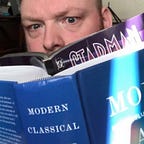Hubble Trouble: How Dark Energy may solve a cosmic conundrum
The fact that the universe is expanding is in little doubt — the question troubling cosmologists is just how rapidly. But, a new model of dark energy may unite conflicting observations.
The rate at which the universe is expanding has troubled cosmologists for decades. Thus far only approximations have been gathered by instruments such as NASA’s Hubble Space Telescope. Even more concerning, recent data from the Hubble telescope have revealed a discrepancy between the two primary techniques used for estimating the universe’s expansion rate.
Data collected via the Hubble telescope suggests that the rate of expansion of the universe — known as the Hubble flow — is more rapid than the rate inferred from cosmic microwave background (CMB) observations.
The CMB is light left over from an event known to cosmologists as the last scattering — the moment at which electrons and photons ceased to be in thermal equilibrium and the universe became ‘transparent’ to photons. Part of the reason the CMB is so remarkable is because of how uniform it is across the entire sky.
